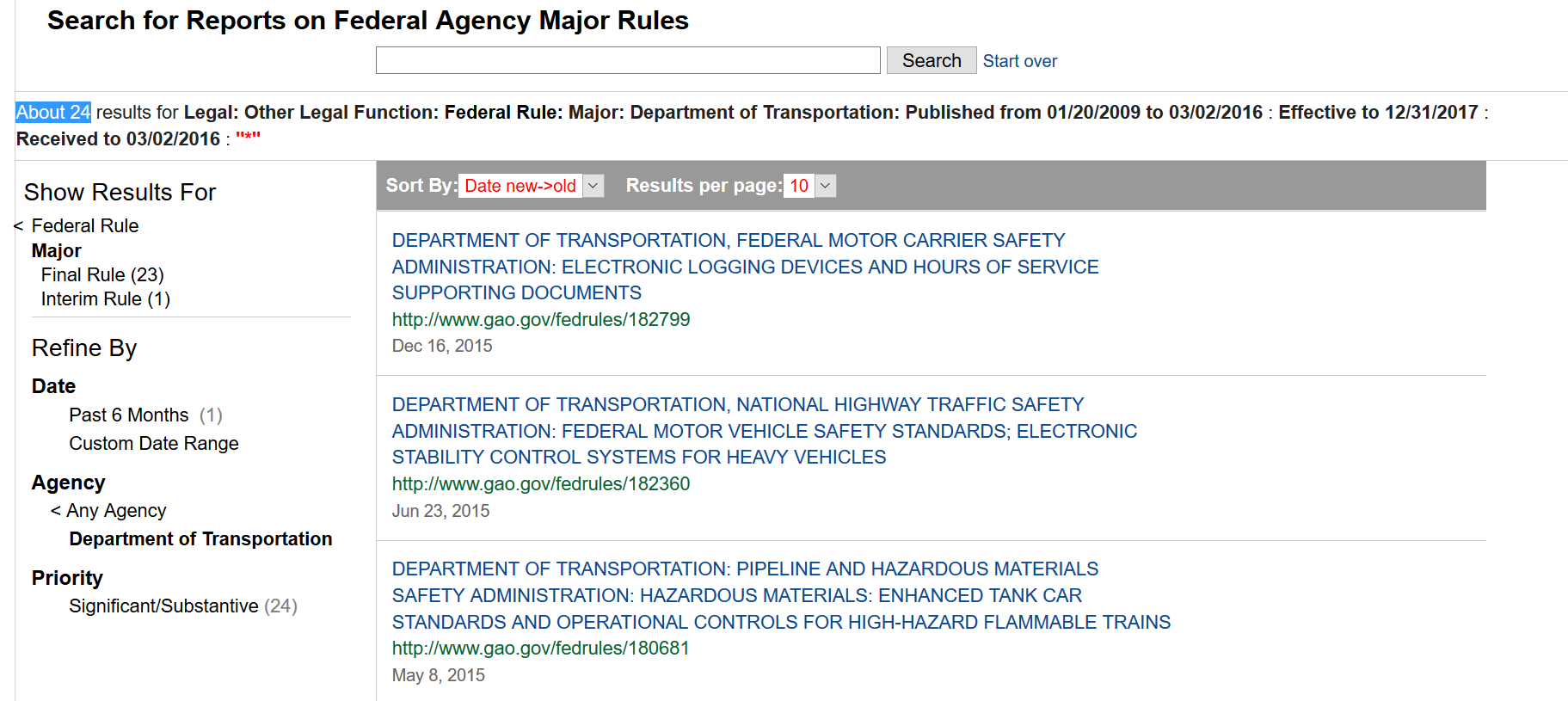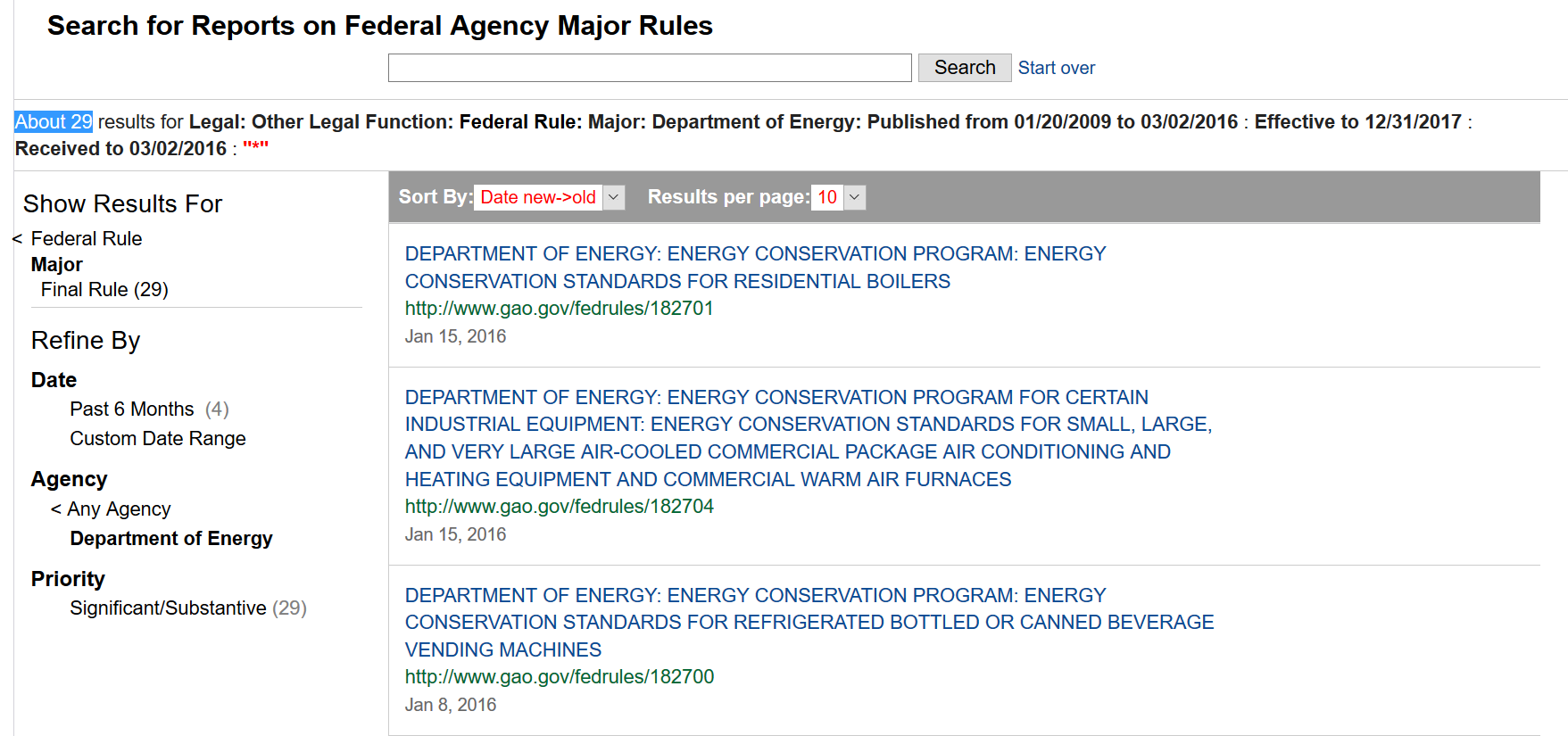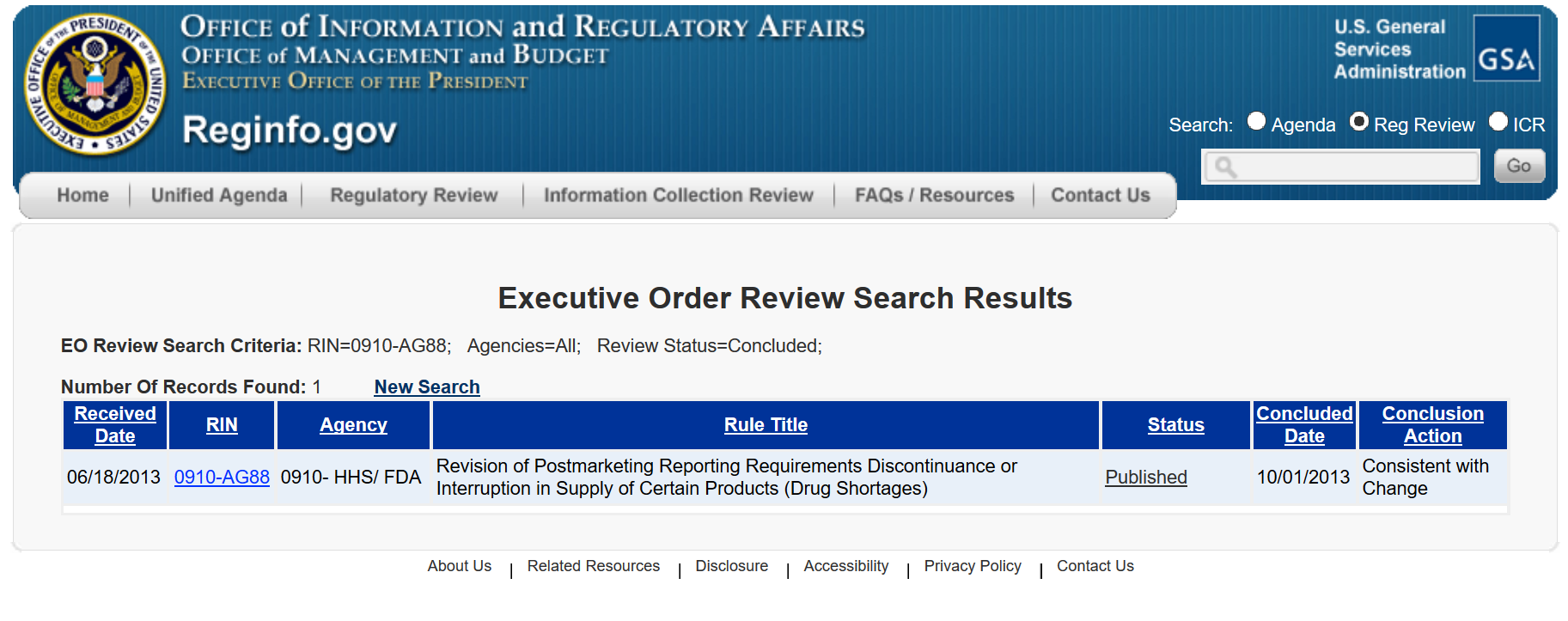Insight
March 24, 2016
Congressional Review Act Discrepancies Persist
In testimony last year, Office of Information and Regulatory Affairs (OIRA) Administrator Howard Shelanski acknowledged that federal agencies should follow their obligations under the Congressional Review Act (CRA). As he testified, “I absolutely agree that agencies should uphold their obligations to report these rules.” After a scathing report in the Washington Post detailing how agencies routinely did not submit rules to the Government Accountability Office (GAO), as required under the CRA, Administrator Shelanski vowed to help correct the problem. After reviewing the last two years of data (2014 and 2015), it’s clear that agencies still frequently skirt legal reporting requirements. The American Action Forum found 955 rules weren’t sent to GAO in 2014 and roughly 1,069 weren’t reported in 2015.
Background
Under the CRA, “before a rule can take effect,” every federal agency must submit a report to both Congress and GAO with a copy of the rule, a statement about whether the rule is “major,” and the effective date of the measure. Technically, a rule that fails to follow this procedure cannot take effect. In practice, however, there is little preventing agencies from hiding regulations from Congress and GAO. Parties challenging rules that violate procedure will run into Section 805 of the CRA: “No determination, finding, action, or omission under this chapter shall be subject to judicial review.”
Findings
AAF compared the number of final rules in the Federal Register to the number of submissions to GAO during the last two years. For example, in 2014 the Federal Register recorded 3,541 rules, compared to only 2,445 rules logged at GAO. However, AAF took the second step of removing routine document corrections that likely don’t qualify as rules under the CRA. This removed 141 regulations, bringing the discrepancy total to 955. There might be other mitigating factors that will lower the gap, but there were still likely hundreds of rules that failed to follow CRA procedure.
For 2015, the Federal Register has recorded 3,408 rules, but 147 of these were corrected documents. As of this writing, agencies only submitted 2,192 rules to GAO, leaving a discrepancy of 1,069 rules that weren’t reported last year, this, despite pleas from Administrator Shelanski that agencies know their responsibilities under the law.
Beyond the aggregate totals, there are some notable rulemakings where the White House and GAO don’t agree. During the Obama Administration, the Department of Transportation (DOT) has finalized 30 major rules according to the White House. See below:
However, GAO has only recorded 24 major rules from DOT. See below:
Some of this discrepancy results from joint rules, but there are other instances that defy an easy answer. In two instances, the White House concluded that rules were major, but the GAO reports disagreed. The administration deemed tire efficiency disclosures and pilot certification requirements as major, but when reported to GAO, both were labeled non–major. This raises troubling issues for Congress, as they typically rely on these GAO reports to initiate formal procedures to rescind regulations under the CRA.
In the final DOT discrepancy, the administration declared a tractor safety rule as non-major. Yet, GAO labeled the rulemaking major, with costs up to $178 million, which should easily qualify the measure for major rule status. Why did the White House state the rule was not major when it clearly exceeded the statutory threshold?
Unfortunately, DOT was not the only agency with a troubling record of complying with the CRA. The Department of Energy (DOE) also had several rules where the status was in dispute. Since 2009, GAO has recorded 29 major rules from DOE. See below:
In theory, this means the White House should also have a record of 29 major DOE rules. However, they list only 25. See below:
In two instances, one for vending machine efficiency and for “Energy Priorities and Allocation,” OIRA confirmed that both rules were not major. Yet, GAO listed both rules as major. There does not appear to be an immediate explanation for why the administration would deny a rule as major, but GAO would include a major rule report.
Finally, in a strange instance, OIRA had no record of approving a rule for HVAC test procedures that GAO listed as major. The only record on OIRA’s website is a Unified Agenda entry that initially did not confirm major rule status, only to reverse the decision later. There has been at least one other similar instance.
A Food and Drug Administration (FDA) major rule also seems to have slipped through OIRA’s cracks. Although the rule appears in both GAO’s records and as a final rule in the Federal Register, the only OIRA review record is for its proposed stage. See below:
Conclusion
Despite assurances from Administrator Shelanski, agencies still do not follow basic legal reporting requirements. Congress has a constitutional responsibility to conduct oversight of the executive, and without compliance from the administration, this oversight grows more difficult. Beyond the hundreds of minor rules that weren’t reported correctly, it is troubling the White House and GAO can’t even agree on major regulations.















